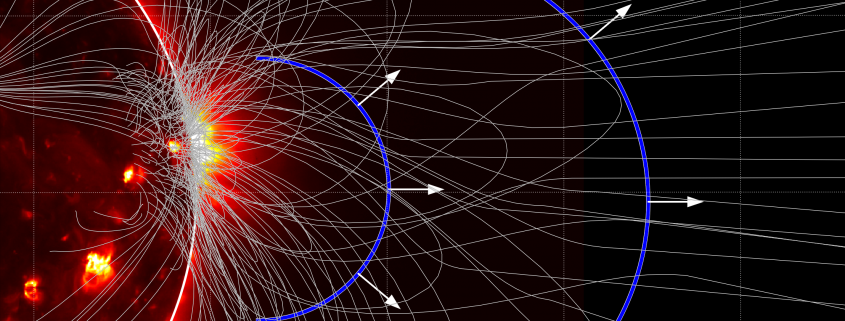I-LOFAR Radio Telescope Reveals Secrets of Solar Shockwaves
The Sun may appear to be a constant force in our solar system, but it’s not as sleepy as you may think. In fact, our Sun can produce giant explosions that release vasts amount of electromagnetic radiation and electrically charged particles into space. These explosions, often referred to as solar storms, can be so fierce that they produce shock waves that propagate towards the Earth. Ultimately these shockwaves can cause a variety of potentially dangerous ‘space weather’ effects including interruptions to telecommunications and power, damage to satellites, and astronauts and passengers on commercial aircraft exposed to potentially lethal doses of radiation.
A new paper published in the scientific journal Astronomy & Astrophysics by members of the I-LOFAR consortium has provided new insights into how solar storms drive shockwaves.
“On September 2, 2017, soon after the Irish LOFAR station was turned on, the Sun produced a solar storm that drove a shock wave. We used data from the NASA and NOAA spacecraft to track the shock wave as it moved through the Sun’s atmosphere, while I-LOFAR was able to detect radio bursts generated by the shock.” said Trinity College Dublin postgraduate student Ciara Maguire, the lead author on the publication.

Caption The Sun’s magnetic fields together is an ultraviolet image of the Sun from NOAA’s GOES spacecraft. The blue arcs tell us where the shock was when a radio burst was observed by I-LOFAR.
These observations enabled scientists to work out how the shock wave accelerated electrons and generated radio bursts. This gives us a detailed insight into how shock waves form and evolve over time. These shocks are a phenomenon found throughout the Universe, including in supernovae, black holes, and distant stars so understanding shocks triggered by the Sun could help to unveil more details about the physics at play.
Additional Notes
I-LOFAR is owned and operated at Birr Castle by Trinity College Dublin on behalf of the I-LOFAR Consortium, which includes Trinity College Dublin, Dublin Institute for Advanced Studies, Armagh Observatory & Planetarium, University College Dublin, University College Cork, National University of Ireland, Galway, and Athlone Institute of Technology.
I-LOFAR is funded by Science Foundation Ireland and the Department of Department of Business, Enterprise and Innovation. The I-LOFAR fibre link is sponsored by open eir.
Contacts
Ciara Maguire
Postgraduate Research Student
Trinity College Dublin & Dublin Institute for Advanced Studies
Mobile: +353 86 263 5970
Prof. Peter Gallagher
Head of Irish LOFAR Consortium
Dublin Institute for Advanced Studies & Trinity College Dublin
Mobile: +353 87 656 8975


